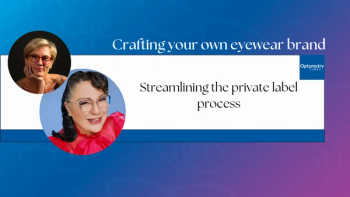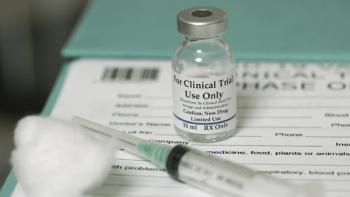
The state of contact lenses
During the Global Contact Lens Forum at Vision Expo West, Scot Morris, OD, FAAO, provided current information about the status of contact lenses in the United States.
Las Vegas-During the Global Contact Lens Forum at
In a U.S. population of 314 million, some 56 million myopes and some 25 million hyperopes are not wearing contact lenses. This is an opportunity to practitioners, said Dr. Morris.
“
Contact lens growth has been stagnant for the past 10 to 15 years. Revenue from contact lenses in 2012 was $21 billion with fitting only 11 percent of patients.
“What if we doubled that?” asked Dr. Morris.
Lack of education is a contact lens practitioner’s worst enemy, he said. We’re not doing a good job of teaching us.
What are we saying, or not saying to patients? Are we making contact lens fitting and wear difficult? Are we treating
The big question: Is it easier to keep patients in what they’re currently wearing?
Dr. Morris asked attendees if they knew their annual supply purchase rate. If it’s not 80 percent, he said, fix it.
Many practitioners fear that if they fit patients in contact lenses, those patients won’t purchase eyewear. Why worry about that, asks Dr. Morris. More than 60 percent of contact lens wearers purchase sunglasses within 60 days, he says.
Excuses from patients for avoiding contact lenses:
- They don’t work for my eyes
- My eyes are too dry
- They cost too much
Rebut those excuses!
First, it’s our job as doctors to educate patients, according to Dr. Morris. Just about everyone can wear contact lenses with the technology we have today.
Second, ask these two questions of your patients: Does your vision fluctuate, and if so, does it improve when you blink? If the answer is yes, your patients have dry eye. That’s something you can fix, and it builds your practice along the way.
“Somewhere along the way," Dr. Morris said, “our profession said that the patient’s managed care program decides what we do as doctors. Stop it!”
Practitioners need to remember that it’s not just what their benefits allow, he said.
Practitioners also need scripts for better patient communication, focused training, and consumer education across media platforms.
“There is huge opportunity with contact lenses,” he said. “Some 160 million people are not wearing contact lenses. We can improve our practices and improve our patients’ lives. The status of contact lenses in America is a huge expanse of opportunity. We just need to take it.”
Newsletter
Want more insights like this? Subscribe to Optometry Times and get clinical pearls and practice tips delivered straight to your inbox.













































.png)


